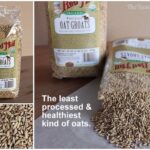Recent investigations by the Union of Concerned Scientists (UCS) have brought to light the extensive influence Tyson Foods wields over our food and farming systems, revealing a concerning picture of environmental damage and social issues. Despite the image of “Healthy Tyson Foods” that may be marketed, the reality behind the scenes, as uncovered by UCS, paints a different story.
One of the most alarming findings, detailed in the 2024 UCS report “Waste Deep”, exposes the sheer volume of wastewater discharged by Tyson’s processing facilities directly into US waterways. Between 2018 and 2022, this amounted to over 371 million gallons of wastewater. This toxic discharge is far from harmless; it’s laden with nitrogen and phosphorus, which deplete oxygen in water and harm aquatic life, as well as animal byproducts such as blood and feces, and dangerous pathogens like E. coli and Enterococcus. The impact is heavily concentrated, with over half of this pollution dumped in Nebraska, Illinois, and Missouri alone. It’s crucial to understand that the reported data is likely just the tip of the iceberg, representing only a fraction of Tyson’s total pollution, as reporting regulations cover only a small percentage of meat processing businesses. Furthermore, the pollution generated by the Confined Animal Feeding Operations (CAFOs) that supply Tyson is not fully accounted for in these figures, adding another layer to the environmental burden.
Beyond direct wastewater pollution, Tyson’s vast supply chain contributes significantly to environmental degradation. A 2022 UCS analysis, “Tyson’s Need to Feed”, estimated the immense land footprint required to sustain Tyson’s operations. In 2020, producing feed for Tyson’s processed animals demanded 9 to 10 million acres of land – an area twice the size of New Jersey. This land use, equivalent to about 5 percent of all US corn and soybean acres planted that year, underscores the scale of Tyson’s agricultural demands. The methods employed in industrial corn and soybean farming, prevalent in Tyson’s supply chain, are known to cause significant environmental problems. These practices lead to soil erosion, contaminate drinking water sources, contribute to coastal dead zones, and increase the vulnerability of farmland and communities to extreme weather events. Tyson’s control over such a vast expanse of farmland presents both a considerable environmental impact and a significant opportunity to promote more sustainable farming practices. For consumers seeking “healthy Tyson foods”, it’s important to consider the environmental health implications embedded within the production process.
The concerns surrounding Tyson Foods extend beyond environmental issues to encompass its market power and labor practices. A 2021 UCS analysis, “Tyson Spells Trouble”, revealed Tyson’s near-monopoly status in Arkansas, its home state. The company controls over two-thirds of the state’s poultry processing and is the sole processor in seven counties. This increasing market dominance since 1978 has coincided with a dramatic decline in the number of poultry farms in Arkansas – a loss of half the farms, despite a staggering 1,000 percent increase in the number of chickens raised annually in the state.
This consolidation of power has profound implications for workers. A joint five-month investigation by UCS, Venceremos, and The Guardian in 2021 uncovered troubling working conditions within Tyson facilities. Employees reportedly work in a climate of fear and intimidation, with inadequate benefits and insufficient COVID-19 protections. A punitive points-based system discourages sick leave, pressuring workers to come in even when unwell, and exposing them to unacceptable risks of injury. A significant portion of Tyson’s workforce consists of immigrants who, facing limited employment options and lacking bargaining power, are often compelled to accept these hazardous working conditions and the environmental pollution in their communities. For those concerned about “healthy Tyson foods”, the ethical dimensions of labor practices and community well-being are crucial considerations.
Ultimately, the investigations into Tyson Foods reveal a complex reality that challenges the notion of “healthy Tyson foods” if health is understood holistically. While Tyson may offer products marketed as healthy, the environmental and social costs associated with its production practices raise serious questions. From massive wastewater pollution and unsustainable land use to concerns about worker exploitation and market dominance, the true cost of Tyson’s operations extends far beyond the price tag on its products.
